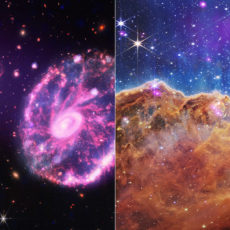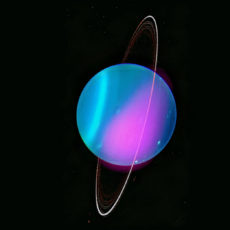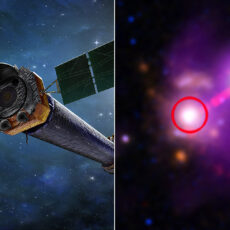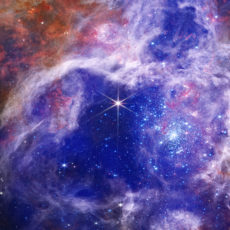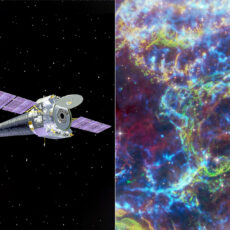
This cosmic bouquet is more than meets the eye, as the image as you see it here was created using X-ray data from NASA’s Chandra X-ray Observatory (blue and green) with optical data from Hubble (yellow) and radio data from the Atacama Large Millimeter/submillimeter Array (orange).

The Tarantula Nebula, 30 Dor, is located approximately 160,000 light-years away in the Large Magellanic Cloud (LMC). Since this is one of the brightest and populated star-forming regions to Earth, 30 Dor is a frequent target for scientists trying to learn more about how stars are born, leading to eye popping images like this one.
- Superior Optics: 400mm(f/5.7) focal length and 70mm aperture, fully coated optics glass lens with high transmission coatings creates stunning images...
- Magnification: Come with two replaceable eyepieces and one 3x Barlow lens.3x Barlow lens trebles the magnifying power of each eyepiece. 5x24 finder...
- Wireless Remote: This refractor telescope includes one smart phone adapter and one Wireless camera remote to explore the nature of the world easily...

There is a large quantity of diffuse, hot gas seen in X-rays, arising from different sources including the winds of massive stars and from the gas expelled by supernova explosions. This data set will be the best available for the foreseeable future for studying diffuse X-ray emission in star-forming regions,” said Lee Mohon, NASA Web Editor.



